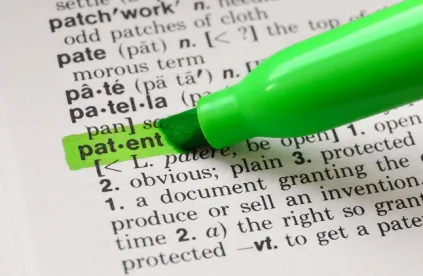On October 4, 2017, the Federal Circuit held en banc that the proper interpretation of 35 U.S.C. 316(d) and (e) requires the Petitioner in an inter partes review (IPR) to prove all propositions of unpatentability, including for amended claims. Aqua Prods., Inc. v. Matal, No. 2015-1177 (Fed. Cir. Oct. 4, 2017). The en banc Court further determined that the PTAB must consider the entirety of the record when assessing the patentability of amended claims under 318(a), not merely the face of a motion to amend.
The Aqua case resulted in five opinions totaling 148 pages, each presenting views on judgment and underlying rationale, ultimately leading to a narrowly tailored holding. In the decision, the Federal Circuit made clear that the burden of persuasion of patentability does not rest with the Patent Owner; instead, it is left to the Petitioner to establish that any proposed amended claims are not patentable.
The Federal Circuit’s Panel Decision
In its panel hearing on appeal from the PTAB decision denying Aqua Products’ motion to amend their claims, Aqua Products argued that based on a plain language interpretation of 35 U.S.C. § 316(e), Aqua Products, the Patent Owner, did not bear the burden of proving patentability of the proposed amended claims. The initial decision in the Federal Circuit held that, based on prior decisions, the burden of persuasion lay with the Patent Owner to demonstrate patentability of substitute claims.
The Federal Circuit’s En Banc Decision
Aqua Products then petitioned for rehearing en banc of the panel decision, which was granted on two questions:
(a) When the Patent Owner moves to amend its claims under 35 U.S.C. § 316(d), may the PTO require the patent owner to bear the burden of persuasion, or a burden of production, regarding patentability of the amended claims as a condition of allowing them? Which burdens are permitted under 35 U.S.C. § 316(e)?
(b) When the Petitioner does not challenge the patentability of a proposed amended claim, or the Board thinks the challenge is inadequate, may the Board sua sponte raise patentability challenges to such a claim? If so, where would the burden of persuasion, or a burden of production, lie?
In a 6-5 vote, the en banc Court overturned the panel decision and determined that the burden of persuasion regarding the patentability of amended claims in an IPR rests with the Petitioner, not the Patent Owner.
The Federal Circuit first determined that no proposed rule had been adopted by the PTAB regarding the burden of persuasion of proposed amended claims, accordingly there was no deference to be given. Then, relying on statutory language and Congressional intent, the Court noted that Patent Owner’s have a right to propose amended claims, and further that this right is an important tool that may be used during IPR.
Section 316(d) does not itself impose a burden of proof on the patent owner. In fact, § 316(d) merely sets out the procedural and statutory criteria that must be satisfied to enter proposed amendments in the IPR. The Court reasoned that the proposed amendments are then governed by § 316(e). Section 316(e) uses the term “unpatentability,” which refers to both pending and issued claims, as opposed to the term “invalidity” used elsewhere in title 35, which both courts and the PTO use in relation to issued claims. Accordingly, the burden for proving unpatentability of all claims, not just those sought to be invalidated, lies with the Petitioner.
The Court also discussed that the Patent Owner is precluded from adding new subject matter in proposed amendments, such that any proposed claims must be narrower than the granted claims and still fully supported in the specification. Furthermore, any proposed amendments must respond to a petitioned ground of unpatentability. In this regard, a Patent Owner may not shift the scope of their claims away from the cited art, instead, to the extent support exists, the amendments must be in the same vein but with greater specificity.
Moreover, the Petitioner shall have the opportunity to contest any newly proposed claims, allowing the Petitioner to search for and submit additional art and arguments in support of the unpatentability of the proposed claims.
Addressing the second question presented, the en banc Court held that the PTAB must base a patentability determination on the record before it instead of merely on the face of the motion to amend claims. The Court declined to address the lingering question of whether or not the PTAB can, sua sponte, raise a challenge to patentability, leaving the question for another day.
The plurality opinion tellingly finished by saying “very little said of the course of the [148] pages that form the [5] opinions in this case has precedential weight. The only legal conclusions that support and define the judgement of the court are: (1) the PTO has not adopted a rule placing the burden of persuasion with respect to the patentability of amended claims on the patent owner that is entitled to deference; and (2) in the absence of anything that might be entitled to deference, the PTO may not place that burden on the patentee. All the rest of our cognitions, whatever label we have placed on them, are just that—cognitions.”
Looking Ahead
Going forward, it is important to ensure that the cited art relied upon in a post grant petition accurately covers not only the scope of the claims, but also either the disclosed embodiments in the challenged patent, or even any accused product. This decision also reinforces the importance of communication between the district court litigation team and the post-grant team, to ensure that the arguments made before the PTAB can be accounted for in district court, noting that any amendments made to avoid prior art in a post-grant proceeding become part of the intrinsic record and may be relied upon for subsequent claim construction determinations.





 />i
/>i
